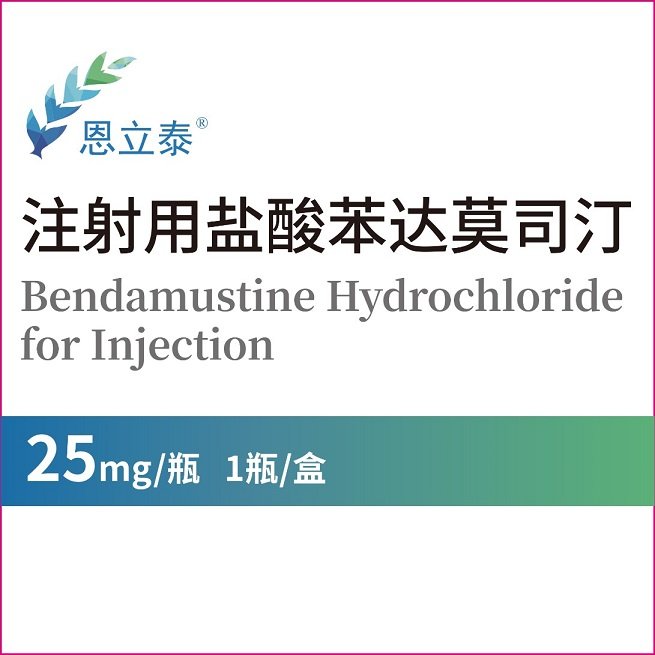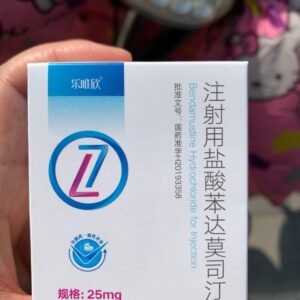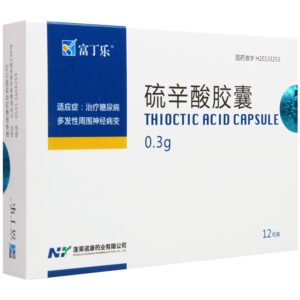Bendamustine-Hydrochloride (Treanda) ;
Functions and indications:
1. For the treatment of chronic lymphocytic leukemia (CLL). 2. For indolent B-cell non-Hodgkin’s lymphoma (NHL) whose disease progresses during treatment with rituximab or rituximab-containing regimens, or within 6 months of treatment.
Dosage and administration:
1. For the treatment of chronic lymphocytic leukemia: (CLL) takes 28 days as a treatment cycle, and should be used for more than 6 treatment cycles. It is administered on the 1st and 2nd day of each treatment cycle, and the recommended dose is 100 mg/m2. It is administered by intravenous drip, and the administration time should not be less than 30 minutes. If grade 4 hematological toxicity or clinically obvious grade 2 non-hematological toxicity occurs, the administration should be suspended. The treatment can be resumed only when the non-hematological toxicity recovers to grade 1 and (or) the blood cell count improves (absolute neutrophil count ≥1×109/L, platelet count ≥75×109/L), but the dose needs to be reduced. (1) If grade 3 hematological toxicity occurs, the dose should be reduced to 50 mg/m2 on the first and second days of each treatment cycle; if toxicity greater than grade 3 or above recurs, the dose should be reduced to 25 mg/m2. (2) If grade 3 or above non-hematological toxicity occurs, the dose should be reduced to 50 mg/m2. Whether to adjust the dose upward should be considered by the treating physician. 2. For the treatment of indolent B-cell non-Hodgkin’s lymphoma (NHL), a treatment cycle of 21 days is generally required for 8 treatment cycles. The recommended dose is 120 mg/m2 on the first and second days of each treatment cycle. The duration of a single administration should not be less than 60 minutes. If grade 4 hematological toxicity or clinically obvious grade 2 non-hematological toxicity occurs, administration should be suspended. Treatment can be resumed only when non-hematological toxicity recovers to grade ≤1 and blood cell count improves (absolute neutrophil count ≥1×109/L, platelet count ≥75×109/L), but the dose needs to be reduced. (1) If grade 4 hematological toxicity occurs, the dose should be reduced to 90mg/m2 on the first and second days of each treatment cycle; if grade 4 toxic reactions recur, the dose should be reduced to 60mg/m2. (2) If grade 3 or above non-hematological toxicity occurs, the dose should be reduced to 90mg/m2; if grade 4 toxic reactions recur, the dose should be reduced to 60mg/m2. 3. Preparation method and precautions: (1) Dissolution: 25mg of this product should be dissolved in 5ml of sterile water for injection; 100mg of this product should be dissolved in 20ml of sterile water for injection. After dissolution, it should be shaken thoroughly until it becomes a colorless or light yellow clear solution with a final concentration of 5mg/ml. This product can generally be completely dissolved within 5 minutes. (2) Dilution: Within 30 minutes after the solution of this product is dissolved, the required volume should be drawn as needed and transferred to 500 ml of 0.9% sodium chloride injection or glucose sodium chloride injection (2.5%, 0.45%, the former is the concentration of glucose, the latter is the concentration of sodium chloride), and ensure that the final concentration of this product in the injection is between 0.2-0.6 mg/ml. The prepared injection can be stored at 2-8℃ for 24 hours, or stored at room temperature and natural light for 3 hours.
Adverse reactions:
1. Serious adverse reactions of this product include bone marrow suppression, infection, infusion reaction and allergic reaction, tumor lysis syndrome, skin reaction, other malignant tumors, neutropenia and pneumonia caused by fever, acute renal failure, heart failure, pulmonary fibrosis, myelodysplastic syndrome, hemolysis, atypical pneumonia, sepsis, erythema, skin necrosis. 2. Dose-related serious adverse reactions include bone marrow suppression, infection, pneumonia, tumor lysis syndrome and infusion reaction. 3. In the treatment of chronic lymphocytic leukemia (CLL), allergic reactions, fever, chills, hypertensive crisis, nausea, vomiting, weakness, fatigue, malaise, weakness, dry mouth, cough, constipation, diarrhea, headache, skin and mucous membrane inflammation and stomatitis, nasopharyngitis, herpes simplex, rash, itching, weight gain, hyperuricemia, decreased hemoglobin, decreased neutrophils, thrombocytopenia, decreased lymphocytes, decreased granulocytes, and increased bilirubin may be seen. 4. Treatment of indolent B-cell non-Hodgkin’s lymphoma (NHL) may cause tachycardia, nausea, vomiting, abdominal pain, bloating, diarrhea, constipation, indigestion, gastroesophageal reflux disease, stomatitis, dry mouth, fatigue, fever, chills, edema, weakness, chest pain, injection site pain, urethral pain, herpes zoster, upper respiratory tract infection, urinary tract infection, sinusitis, pneumonia, fever, thrush, nasopharyngitis, weight gain, lack of appetite, dehydration, hypokalemia, low back pain, bone pain, limb pain, joint pain, headache, dizziness, taste disorders, insomnia, anxiety, depression, cough, pharyngeal pain, dyspnea, wheezing, nasal congestion, rash, pruritus, dry skin, night sweats, hyperhidrosis, hypotension, decreased hemoglobin, neutropenia, thrombocytopenia, lymphopenia, and granulocytopenia. 5. Adverse reactions reported after marketing include allergic reactions and injection site reactions (including phlebitis, itching, irritation, pain and redness and swelling).
Contraindications:
1. Patients who are allergic to this product and mannitol are prohibited from using this product. 2. Patients with mild to moderate renal insufficiency should use this product with caution. Patients with Ccr3×ULN are prohibited from using this product. 4. Pregnant women may cause harm to the fetus when using this product. It is prohibited to use this product. 5. It is not yet clear whether this product can be used for
Share:
Products
Our offers
Health Classification
Let us work together to protect precious health






























